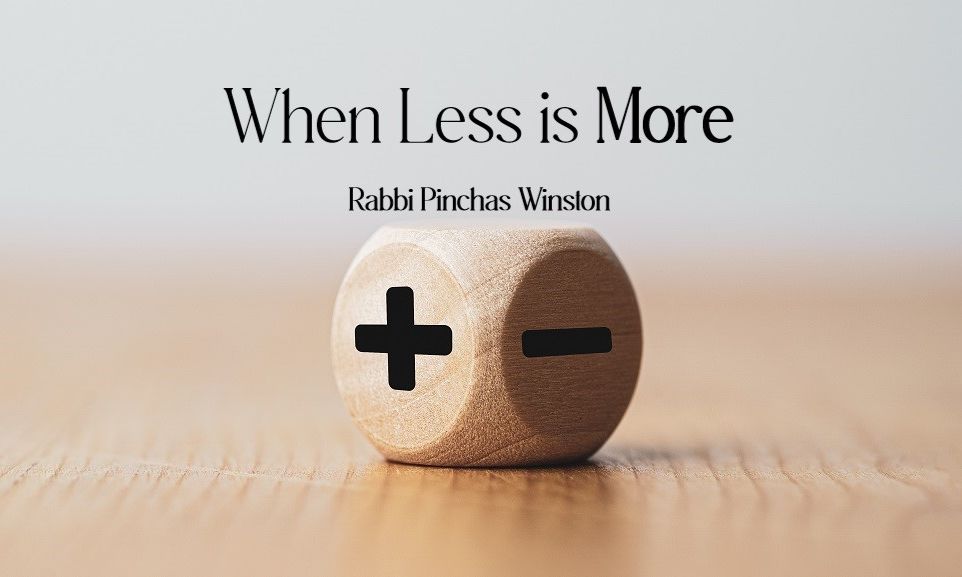
Nasso: When Less Is More
The Kabbalists explain that "working" the Garden did not mean getting out the hoe and spade and doing some planting. The true paradise of Aiden was...

FRIDAY NIGHT
א וַיְהִ֡י בְּיוֹם֩ כַּלּ֨וֹת משֶׁ֜ה לְהָקִ֣ים אֶת־הַמִּשְׁכָּ֗ן וַיִּמְשַׁ֨ח אֹת֜וֹ וַיְקַדֵּ֤שׁ אֹתוֹ֙ וְאֶת־כָּל־כֵּלָ֔יו וְאֶת־הַמִּזְבֵּ֖חַ וְאֶת־כָּל־כֵּלָ֑יו וַיִּמְשָׁחֵ֖ם וַיְקַדֵּ֥שׁ אֹתָֽם
On the day that Moshe had finished (chof-lamed-VAV-tav) setting up the Mishkan and had anointed and sanctified it, along with all of its implements . . . (Bamidbar 7:1)
There is an interesting discussion that is relevant to this week’s parshah, because it follows on the heels of Shavuot and the giving of Torah. It is about the prayer that we say three times a day, known as “Tehillah L’David” (Tehillim 145), and which is often referred to as “Ashrei” because that is its opening word.
Without going into the entire discussion, Rabbi Chaim Vital wrote the following:
. . . The problem is that according to this, there is an error in our version of Tehillim in the posuk,
יט רְצֽוֹן־יְרֵאָ֥יו יַֽעֲשֶׂ֑ה וְאֶת־שַׁוְעָ֘תָ֥ם יִ֜שְׁמַ֗ע וְיֽוֹשִׁיעֵֽם
“The will of those who fear Him He will do; and their cry (shav’asam) He will hear and save them” (Tehillim 145:19): the word “shav’asam” (shin-vav-ayin-tav-mem) should be written without the “vav” according to theZohar. Furthermore, in the posuk,
ח חַנּ֣וּן וְרַח֣וּם יְהֹוָ֑ה אֶ֥רֶךְ אַ֜פַּ֗יִם וּגְדָל־חָֽסֶד
“Gracious and merciful (v’rachum) is G-d; slow to anger and great (u’gdal) in kindness” (Tehillim 145:8), “v’rachum” and “u’gdel” are both written with a vav. Perhaps the answer is similar to what is found in Parashat Pinchas, Ray’a Mehenmna 254a, on the posuk,
אוַיְהִ֡י בְּיוֹם֩ כַּלּ֨וֹת משֶׁ֜ה לְהָקִ֣ים אֶת־הַמִּשְׁכָּ֗ן וַיִּמְשַׁ֨ח אֹת֜וֹ וַיְקַדֵּ֤שׁ אֹתוֹ֙ וְאֶת־כָּל־כֵּלָ֔יו וְאֶת־הַמִּזְבֵּ֖חַ וְאֶת־כָּל־כֵּלָ֑יו וַיִּמְשָׁחֵ֖ם וַיְקַדֵּ֥שׁ אֹתָֽם
“On the day that Moshe finished” (Bamidbar 7:1), where it says that the word “finished” is written “chof-lamed-tav.” They asked, “It is written ‘chof-lamed-vav-tav’ (in the Torah), that is, with a vav?” The answer given is that in the Torah of Heaven it is written without (the vav), but in the Torah given to us after the sin of the calf (it is with the vav). Thus, perhaps we can apply the same answer to the posuk of, “The will of those who fear Him He will do; and their cry (shavetam) He will hear and save them” – that is, in Heaven it is written without the vav. (Sha’ar HaGilgulim, Chapter 40)
There are two versions of Torah? And, even if there are, what difference does a vav make that Heaven’s version, which we have to assume is more perfect than our version, would leave it out of the word “kalot” in the posuk from our parshah?
According to Kabbalah, there ARE two versions of Torah, and this is evident by the fact that there were two sets of tablets. After receiving the first set of tablets, which had been carved out by G-d and engraved by G-d, Moshe Rabbeinu broke them upon seeing the golden calf. Eighty days later he received a replacement set, with the exception that this time they had been carved out by man, Moshe Rabbeinu himself. Even though G-d authored both sets of tablets, and all the mitzvot were the same, the second set contained additional words that had not been found on the first set.
In Kabbalistic terms, the first set of tablets corresponded to “Torat Atzilut,” referring to a “world” that is beyond the physical one with which we are familiar. It is a level of reality on which, according to tradition, there is yichud (union) between the light of Ain Sof and the Sefiros of that level. In other words, it is the last level of creation that is intrinsically holy, and therefore eternal.
When the Jewish people said the phrase “Na’aseh v’Nishma” – “We will do and we will understand” – (Shemot 24:6), they became elevated to the level that Adam HaRishon was on prior to his sin of eating from the Tree of Knowledge of Good and Evil, and thus immortal. Therefore, they merited “Toras Atzilut” and the first set of tablets, the receiving of which would have finalized their transition to this level of existence. As a result, the entire world would have been perfected and Yemot HaMashiach would have begun there and then, just as it would have for Adam HaRishon had he abstained from eating from the Tree of Knowledge until that first Shabbat.
SHABBAT DAY
טו וַיִּקַּ֛ח יְהֹוָ֥ה אֱלֹהִ֖ים אֶת־הָֽאָדָ֑ם וַיַּנִּחֵ֣הוּ בְגַן־עֵ֔דֶן לְעָבְדָ֖הּ וּלְשָׁמְרָֽהּ
G-d took Man and placed him in the Garden of Eden . . .(Bereishit 2:15)
However, by allowing the golden calf to come into existence – even though the vast majority of Jews did not actually participate in its construction or the worshiping of it – the nation descended from its lofty level back down to the world of “peirud” (separation). On this level, all that exists is not intrinsically holy, which is why the temples could be destroyed, and by mortal and impure men.
This is the level of “Torat Beriyah,” so called because the “world” to which it belongs is called “Beriyah,” though it also includes the two levels below it, Yetzirah and Asiyah. On these levels, and it becomes increasingly truer as one descends from level to level, there is little if any unity, which is why it is also called the “World of Separation.” This is the reason why there is so much disagreement and war in the world.
Thus, when the Talmud speaks of every Jew being a “guarantor” for his fellow Jew (Sanhedrin 27b), it does so because we have difficulty achieving this. In a sense, this directive is both a reminder and an order for a Jew to transcend the physical reality of everyday life in order to rise above it, because unity amongst the Jewish people to this degree is a supernatural reality.
In fact, as the commentators point out, Torat Beriyah was not in place of Torat Atzilut, it was a stepping-stone to it. The effect of any sin is to distance oneself from holiness, and ultimately from G-d Himself. The more severe the sin, the more this is true, and therefore, the more steps a person needs to return to Him.
As the Ba’al HaTurim points out (Aikev), the first set of tablets were incorporated into the second set of tablets, not replaced by them. Indeed, as the Talmud points out (Bava Basra 14a), even after Moshe broke the first set, they were not disposed of or hidden. Rather, they were also placed inside the Aron HaKodesh, to remind the Jewish people that historical rectification means ascending from the level of the second set of tablets to the first once again.
This was, in effect, what the four rabbis did when they entered “Pardes” (Chagigah 14b). The word itself means “orchard,” and is the basis of the English word, “paradise,” because the original Paradise was a “Garden of Pleasure” (Eden). However, it was not the type of garden that most people think it was, as is evident from the story of the four rabbis.
As Tosfot points out, the rabbis didn’t actually go anywhere, at least not physically. Instead, they meditated on the 42-letter Name of G-d with which prophets used to enter a state of prophecy. Their goal had been to transcend the levels of Torat Beriyah and enter the level of Torat Atzilut, for the ultimate purpose of changing the direction of history at that time.
Why at that time? Because, it was just after the destruction of the Second Temple by the Romans, and Jewish blood flowed into the streets. The Jewish world was on the verge of annihilation, and the world was losing its right to exist. The four rabbis – Rabbi Akiva, Ben Zoma, Ben Azzai, and Elishah ben Abuyah – entered “Pardes” in order to make a change in the “program” of creation, to save both the Jewish people and the world in general. The secret to accomplishing this change was entering the world of Torat Atzilut.
How did they propose to do this?
As we have taught before, “Pardes,” in Hebrew (פרדס), stands for four different words and levels of Torah learning: Pshat (פ), Remez (ר), Drush (ד), and Sod (ס). These words refer to the simple meaning of a Torah idea, a deeper level of understanding to which there is a hint, the level of understanding that emerges from exegesis, and the level of understanding that is part of Kabbalah.
Respectively, these four levels correspond to the simple verse of the Torah, Mishnah, Talmud, and Kabbalah. Likewise, they also correspond to the four lowest levels of the soul: Nefesh, Ruach, Neshamah, and Chiyah, so that as one travels from level to level, he also becomes more aware of the corresponding level of soul. This is the source of spiritual growth.
Torat Beriyah corresponds to the three bottom levels, and Torat Atzilut corresponds to the fourth highest level, called “Chiyah.” Indeed, the first three letters of “Pardes” –פרדס- spelled the word “pered,” which means “separation.”
We still need to discuss the process of ascension and rectification.
SEUDAH SHLISHIT
ו וַיִּקַּ֛ח יְהֹוָ֥ה אֱלֹהִ֖ים אֶת־הָֽאָדָ֑ם וַיַּנִּחֵ֣הוּ בְגַן־עֵ֔דֶן לְעָבְדָ֖הּ וּלְשָׁמְרָֽהּ
G-d took Man and placed him in the Garden of Eden to work it, and to watch over it. (Bereishit 2:15)
The Kabbalists explain that “working” the Garden did not mean getting out the hoe and spade and doing some planting. The true paradise of Eden was in Pardes, that is, the conceptual reality in which Adam lived and was able to relate to G-d. It was only slightly physical and mostly spiritual, and Adam HaRishon more resembled an angel than a man.
Thus, the four rabbis who entered Pardes were, in fact, trying to rectify the sin of the first man, Adam HaRishon, a monumental task that, apparently, they were not as capable of doing as they had hoped they would be. They were trying to enter the level of consciousness that Man enjoyed prior to his sin in order to rectify it, because there is a concept that one can only atone for a sin if he can return to the level upon which the sin was committed.
They had mastered Mikrah – the simplest explanation of the entire Torah -and they knew the entire Mishnah on the level of the Talmud. They had mastered Pshat, Remez, and Drush. And, as is evident from the story in the Talmud, they had sufficiently mastered Sod – Kabbalah- to enter Pardes, but not enough to withstand the profound tests of reaching such sublime levels of consciousness: Ben Zoma went insane, Ben Azzai died, and Elisha ben Abuya became a heretic. Even Rebbi Akiva needed special Divine protection to withstand the wrath of the angels.
Some would like to learn from this a reason to stay away from Kabbalah. However, the true lesson is that Pardes is attainable, but one must not go beyond the level suitable for him. For, as the Arizal teaches:
If a person fails to fulfill all 613 Mitzvot on all three levels of deed, speech, and thought, then he will have to reincarnate until he does. A person must also learn Torah on all four levels, alluded to by the word “PaRDeS,” which stands for Pshat, Remez, Drush, and Sod. He will have to reincarnate until he does. (Sha’ar HaGilgulim, Chapter 16)
Think of Pardes as ladder between the world we live in and G-d Himself. Pshat is the first rung on the ladder,Yetzirah is the second rung, Beriyah is the third, and Atzilut is the fourth. In fact, the Nefesh HaChaim says that this is what the ladder that Ya’akov Avinu dreamed about represented. Should we not climb it?
Indeed, says the Midrash, because Ya’akov didn’t climb the ladder after he was personally invited to by G-d, his descendants had to suffer the four exiles: Babylonian, Median, Greek, and the Roman. To remain on the ground, that is, on the level of Pshat is to remain in the world of physicality, and be vulnerable to the enemies of truth.
MELAVE MALKAH
Regardless of what we accomplish in our lifetimes, Yemot HaMashiach will finish the process. Torat Beriyah will shed its layers, and Torat Atzilut will emerge from within:
Most of the following is based on the various writings of Rav Chaim Vital, zt”l. Know that from the aspect of Atzilut the Torah is explained in a fashion relative to the Sefirot that emanate from it. All concepts of the Torah and its commentaries are not from the aspect of Neshamah, except for the secrets of the Zohar. In the future (hopefully soon) when the redemption comes, all the klipot will be voided and the Jewish nation will have been sorted out, the good extracted from the waste. Everyone remaining shall be completely pure and good without any bad. Those that had diligently applied themselves with the secrets of acts of loving-kindness, as well as meticulously performing their prayers and other mitzvot, following the manners stemming from the level of Sod with purity and cleanliness, without doubt, they will not need the tests of the end of days when the secret of the Tree of Life (the aspect of the soul of Atzilut) bursts through. For the purpose of these tests is for those who attach themselves to the aspect of Pshat of Torah, which stems from the Tree of Knowledge of Good and Evil. This attachment indicates that their souls emanate from the realms of Beriyah, Yetzirah, and Asiyah. In those worlds the verse, “In cycles shall the evil-doers travel” (Tehillim 12:9) is applicable. They need to be tested so that they can ultimately determine for themselves as to where they want to remain attached, to the good or to the evil. Yet, with respect to those who stem from the Tree of Life, it is written “And the intellectuals shall shine as the shinning of the sky” (Daniel 12:3). This indicates that their souls emanate from the realm of Atzilut, and therefore the tests of the final redemption will not be as heavy for them, as for the people with iniquities. After the final redemption there will be a great revelation of the secrets of Torah that have been thus far hidden from all. This revelation will be even for those that didn’t make efforts to understand Torah on the level of Sod; since they toiled to understand the simple levels of Torah, they merited to be privy to that revelation also. At that point in time, both groups will study the Torah, Mishnah, and Halachah on the level of Sod. That doesn’t mean that, G-d forbid, the Torah and Halachah as we understand them now will change . . . (Tuv Ha’Aretz, “The Secret of the Birth pangs of Mashiach”)
May it happen sooner than later.
***
Pinchas Winston is the author of over 95 books on various topics that deal with current issues from a traditional Jewish perspective. He has also written on the weekly Torah reading since 1993, called “Perceptions,” as well as on current topics and trends affecting Jewish history, past and present. One of his missions is to make the depth and beauty of the more mystical teachings of Torah understandable and accessible to those who can really benefit from them. Visit his website at thirtysix.org.


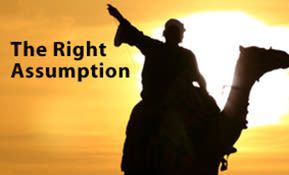
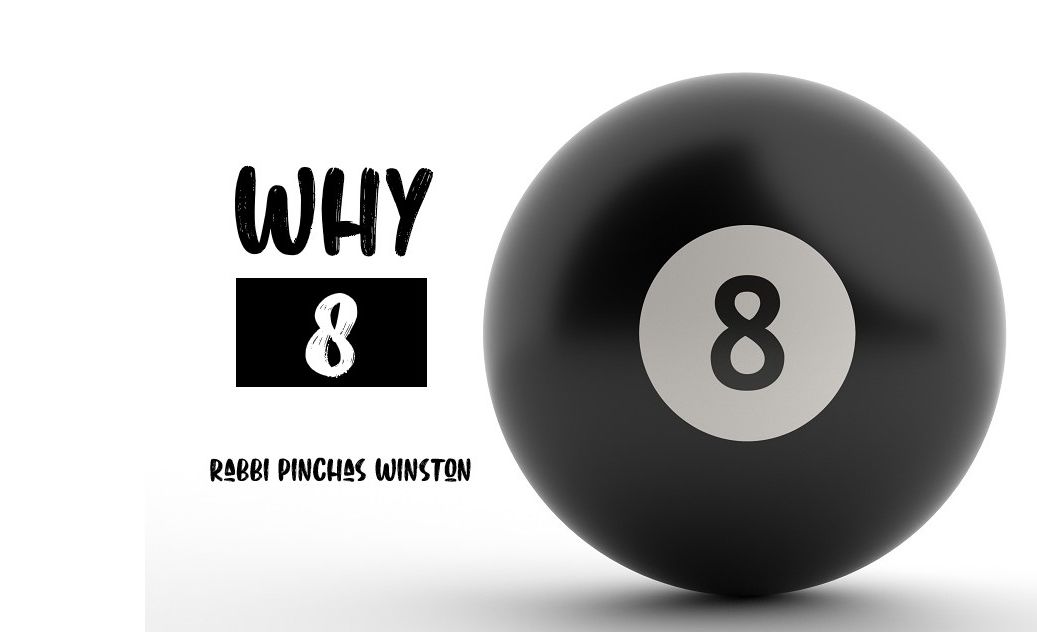
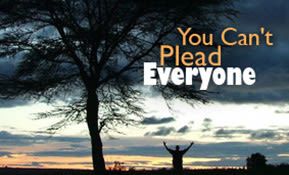

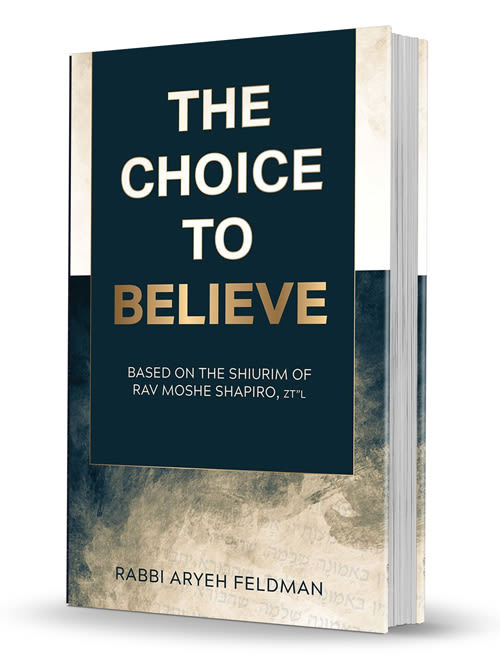
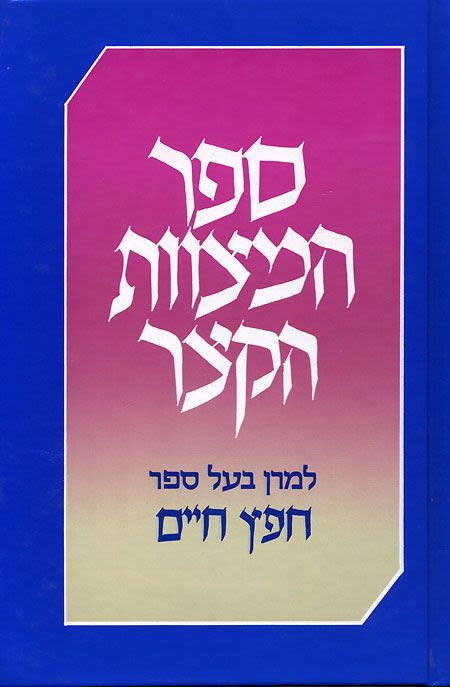

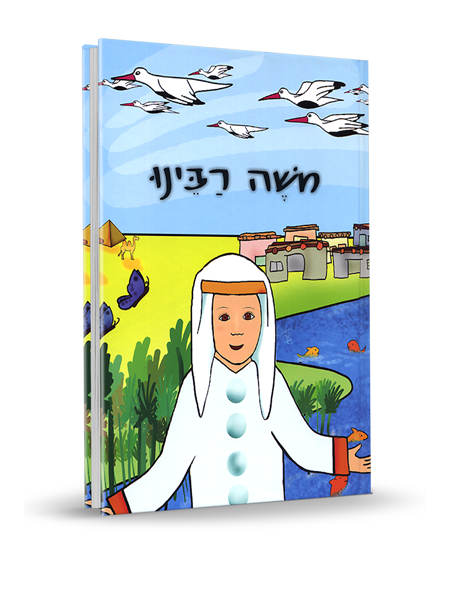
Tell us what you think!
Thank you for your comment!
It will be published after approval by the Editor.